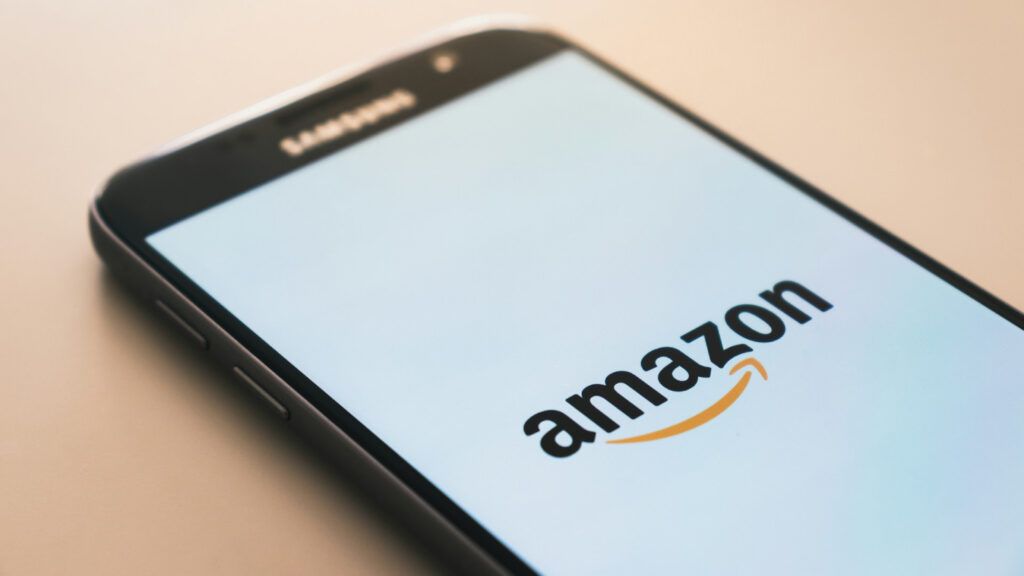
HOME / BLOG / STATISTICS
Amazon Statistics 2025: 97+ Stats & Insights [Expert Analysis]
- October 21, 2025
- Bill Nash
- 5:10 pm
Since its founding as an online bookstore, Amazon has grown into one of the largest e-commerce and technology companies in the world. For brands, sellers, and marketers, understanding Amazon’s scale, trends and ecosystem dynamics is essential. In this article, we present 97+ verified Amazon statistics (2023-2025), and provide insights on what they mean for your business.
Amazon’s global net sales (total revenue) in 2024: $638.0 billion.
Year-over-year revenue growth (2024 vs 2023): ~11%.
Estimated Amazon Prime global members (2024–2025 estimates): ~200–220 million+ (industry estimates vary by source).
AWS (Amazon Web Services) revenue in 2024: ~$107.6–$108 billion.
AWS year-over-year growth in 2024: ~19%.
Amazon operating income in 2024: ~$68.6 billion.
Amazon net income (2024): tens of billions (company reported substantially higher profitability in 2024 vs 2023).
Amazon’s market capitalization (mid-2025 range): ~$2.3–2.4 trillion (varies with markets).
Amazon’s total employees (2025 / 2024 reports): ~1.55–1.56 million worldwide.
Amazon’s North America net sales (2024): ~$387.5 billion.
Amazon’s International net sales (2024): ~$142.9–$143 billion.
Amazon’s subscription services revenue (Prime etc.) in 2024: ~$44 billion+.
Amazon Advertising revenue (2024): ~$56.2 billion (approx.).
Third-party sellers’ share of units sold on Amazon: ~60%+ of units (third-party marketplace continues to be the majority of unit sales).
Estimated number of active sellers on Amazon worldwide: millions (estimates ~6–10M+ sellers/listings).
Total product listings across Amazon marketplaces (global): hundreds of millions (estimates vary widely, commonly 350M+ catalog items).
Average annual spend of a U.S. Prime member on Amazon: ~$1,200–$1,500/year (commonly cited ranges vs non-Prime).
Prime vs non-Prime average spend (U.S.): Prime members spend materially more — commonly ~2x or more than non-Prime customers.
Percentage of U.S. e-commerce sales via Amazon (2024–2025 est.): ~35–42% depending on category & data source.
Amazon’s web/mobile traffic: billions of visits per month (commonly cited ~2+ billion visits monthly).
Packages shipped daily (estimates in peak periods / year-round averages): hundreds of thousands to millions per day (estimates often say ~1–2M/day at scale).
Orders processed per second (global avg estimates): dozens to ~20+ orders/sec depending on season.
Percentage of product searches that start on Amazon in the U.S.: ~50–61% (search behavior shifted from Google to Amazon for product discovery).
Percentage of Amazon units sold that are from third-party sellers (by count): ~60–66% (varies by quarter).
Amazon’s fulfillment infrastructure: hundreds of fulfillment centers / sortation centers / delivery stations globally (dozens of major fulfillment hubs across regions).
Percent of U.S. Prime members within one-day delivery from an Amazon fulfillment center: ~90%+ (company claims very high one-day coverage).
Amazon’s advertising business is among the top 3 digital ad platforms (behind Google and Meta by many metrics).
Amazon’s grocery/physical retail footprint includes Whole Foods Market stores and Amazon Fresh locations (hundreds of physical retail locations worldwide).
Amazon’s Voice / Alexa device installed base: tens to hundreds of millions of devices (Echo family adoption remains substantial).
Amazon Prime Day sales: billions in GMV (gross merchandise volume) annually during the event (varies by year).
Percentage of Amazon sales from private label brands (estimates vary): single digit to low-teens % of certain categories.
Amazon Web Services serves millions of active customers (range includes startups, enterprises, government).
AWS is one of the top 2–3 cloud providers globally by revenue (alongside Microsoft Azure and Google Cloud).
AWS contribution to Amazon’s profits is disproportionately large relative to its share of revenue (i.e., highly profitable margin segment).
Number of Amazon delivery partner drivers (independent contractors & DSP fleet drivers): hundreds of thousands globally.
Amazon’s R&D & technology investment (annual): tens of billions per year (R&D plus technology & content capex).
Amazon’s free-cash-flow generation improved markedly in 2024 vs prior years (company reported stronger cash flow performance).
Percentage of Amazon’s net sales from North America in 2024: ~60–61% (North America remains the largest region).
Amazon’s international revenue growth rate (2024): ~9% (International grew in high single digits in 2024).
Marketplace take rate (fees & commissions combined for sellers) varies by category but typically ranges from ~10–30% on sponsored/fulfillment/marketplace fees.
Share of small & medium sellers using Fulfillment by Amazon (FBA): significant portion of active 3P sellers (many sellers use FBA for logistics).
Amazon’s average order value (AOV) fluctuates by region and quarter; retailers use AOV as a KPI to measure Prime lift.
Amazon’s brand value ranking (2025 ranges): top 5 globally (brand value in the hundreds of billions).
Amazon’s return policy and customer support remain core to its customer retention strategy (policy: free returns on many items for Prime).
Share of Amazon’s revenue from services (AWS + advertising + subscriptions) has been growing as a % of total revenue vs pure retail.
Amazon’s Amazon Music & Prime Video content investments run into billions per year (content + licensing + originals costs).
Amazon Logistics and delivery network expansion has increased the company’s control over last-mile delivery — reducing reliance on external carriers.
Amazon’s “Buy with Prime” and other seller programs aim to expand Prime benefits off-site (allowing merchants to offer Prime on their own sites).
Amazon’s returns & reverse logistics costs are material; many sellers track returns rate by category (varies widely).
AWS market segments with fastest growth: Generative AI / ML services, database & analytics, compute (2024–2025 trends).
Amazon’s share of US e-retail advertising growth is increasing because advertisers shift spend to Amazon for purchase-intent advertising.
Number of Amazon patents and IP filings: tens of thousands historically (Amazon is an active patent filer).
Amazon’s carbon and sustainability commitments include major investments in electrified delivery vehicles and renewable energy projects.
Amazon Prime free shipping thresholds and delivery speed continue to be differentiators for Prime retention.
Amazon’s mobile app is one of the top downloaded shopping apps globally (Apple App Store / Google Play leaderboards).
Share of Amazon sales coming from mobile: significant portion (mobile commerce and app make up a large slice of transactions).
Amazon’s retail assortment diversification includes categories from groceries to apparel to electronics and more — making it a true one-stop shop.
Amazon’s “Subscribe & Save” program drives repeat purchases in consumables categories.
Amazon’s Buy Box algorithm and sponsored ads are two primary levers for seller visibility on the platform.
Amazon’s product review ecosystem (reviews, vine, early reviewer programs) significantly influences conversion rates for listings.
Amazon’s international marketplaces include the U.S., UK, Germany, Japan, India, Canada, Australia, Mexico, Brazil, and more.
Amazon’s India marketplace is one of its fastest growing international markets in terms of GMV growth.
Amazon’s AWS regions & availability zones: dozens of availability zones across many regions to support global cloud infrastructure.
Share of small businesses that sell on Amazon and cite platform as substantial revenue source: many SMBs rely on Amazon as primary channel (varies by region).
Amazon’s Alexa voice commerce continues to grow, though voice remains a smaller percentage of total commerce vs web/app.
Amazon frequently hires seasonal workers for Q4 holiday peaks — seasonal hiring volumes reach hundreds of thousands annually.
Amazon’s long-term capital expenditure includes fulfillment capacity, robotics, data centers for AWS, and delivery infrastructure.
Amazon’s acquisition strategy includes buying tech, retail, and logistics players to improve capabilities (historical acquisitions include Whole Foods, Ring, MGM, etc.).
Amazon’s “Amazon-first” advertising formats (Sponsored Products, Sponsored Brands, Sponsored Display) dominate seller ad budgets.
Amazon’s fraud & counterfeiting prevention programs (Brand Registry, Project Zero) aim to protect brands and reduce bad listings.
Amazon’s product category dominance varies: in many consumable & household categories Amazon holds very large % shares of online purchases.
Amazon’s return to profitability in recent years improved investor sentiment (operating/profitability metrics improved materially in 2024).
Amazon’s effective tax rate varies year to year due to jurisdictional mix and credits; tax policy remains a topic of investor attention.
Amazon’s employee upskilling initiatives include large investments in training programs (hundreds of millions to ~$1.2B commitments noted historically).
Amazon’s warehouse automation & robotics adoption continues to scale — it both increases throughput and drives debate about labor impacts.
Amazon’s ecosystem of services (Prime, AWS, Ads, Seller Services) creates strong customer & merchant lock-in effects.
Amazon’s share of retail searches on mobile is significant — many shoppers open the app first on mobile devices.
Amazon’s marketplace policies and fee structure are a frequent subject of regulator and seller scrutiny.
Amazon’s “Fulfillment by Amazon” (FBA) powers logistics for many third-party sellers and remains a major growth driver for seller scale.
Amazon’s revenue per employee (revenue divided by employee count) is in the hundreds of thousands of dollars per employee.
Amazon’s cloud outages (sporadic/high-impact) highlight concentration risks for businesses that rely heavily on a single cloud provider. (Newsworthy events occurred in 2024–2025)
Amazon’s advertising gross margin is high relative to retail margins, making ads a strategic profit engine.
Amazon’s marketplace fraud mitigation and seller verification efforts have increased over time (policy and automated tooling improvements).
Amazon’s customer retention via Prime is strong — renewal rates are high (U.S. Prime renewal typically very high, reported in the 80–90%+ ranges in various analyses).
Amazon’s product search ranking algorithm (A9) and relevance signals remain central to SEO on the platform.
Amazon is expanding merchant tools (Brand Analytics, A+ Content, Stores) to help brands convert on-site.
Amazon’s AWS supports many public sector & government contracts — governments globally use AWS for services (subject to procurement rules and oversight).
Amazon’s evolving returns policy, shipping options, and Prime benefits continue to be used as competitive differentiators against other retailers.
Amazon’s seller fees, fulfillment fees, and ad costs are key levers that determine seller profitability and shelf space economics.
Amazon’s logistics cost per item can decline with scale and improved automation, critical to margin improvement.
Amazon’s international expansion strategy typically combines marketplace localization, logistics investment, and localized partnerships.
Amazon’s investments in AI & machine learning now power product recommendations, search relevance, fraud detection, and AWS AI services.
Amazon’s AWS also sells foundational AI/ML building blocks that many companies use to build modern applications.
Amazon’s private label & exclusive products strategy helps margin improvement in selected categories.
Amazon has a substantial presence in enterprise commerce and B2B (Amazon Business) with specialized features for organizations.
Amazon’s partner & delivery service provider (DSP) program creates an ecosystem of small delivery businesses working with Amazon.
Amazon’s Prime Video user base and content investments make it a top streaming player in many markets (competition with Netflix, Disney+, etc.).
Amazon’s share-of-search (a metric for ad/SEO planners) is used to measure visibility vs competitors on Amazon.
Amazon’s Alexa / Echo integrations continue to expand into smart home, auto, and third-party device ecosystems.
Analysts project continued revenue growth across Amazon’s core pillars (Retail, AWS, Advertising) with advertising and cloud as key profit drivers in the near term.
Ready to Grow Your Business?
At Marketing LTB, we specialize in helping businesses like yours thrive online. From strategic digital marketing and branding to web development and social media management, we offer the tools and expertise to elevate your brand and drive real results.
Let’s build something amazing together, get in touch with us today!

About Marketing LTB
Marketing LTB is a full-service marketing agency offering over 50 specialized services across 100+ industries. Our seasoned team leverages data-driven strategies and a full-funnel approach to maximize your ROI and fuel business growth. Discover how our expertise can drive revenue for your business>

About the author, Bill Nash
Bill Nash is the CMO of Marketing LTB with over a decade of experience, he has driven growth for Fortune 500 companies and startups through data-driven campaigns and advanced marketing technologies. He has written over 400 pieces of content about marketing, covering topics like marketing tips, guides, AI in advertising, advanced PPC strategies, conversion optimization, and others.
